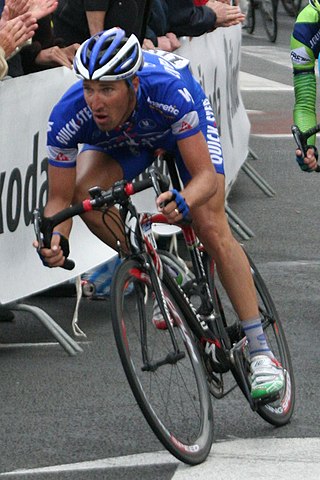A nutrient is a substance used by an organism to survive, grow, and reproduce. The requirement for dietary nutrient intake applies to animals, plants, fungi, and protists. Nutrients can be incorporated into cells for metabolic purposes or excreted by cells to create non-cellular structures, such as hair, scales, feathers, or exoskeletons. Some nutrients can be metabolically converted to smaller molecules in the process of releasing energy, such as for carbohydrates, lipids, proteins, and fermentation products, leading to end-products of water and carbon dioxide. All organisms require water. Essential nutrients for animals are the energy sources, some of the amino acids that are combined to create proteins, a subset of fatty acids, vitamins and certain minerals. Plants require more diverse minerals absorbed through roots, plus carbon dioxide and oxygen absorbed through leaves. Fungi live on dead or living organic matter and meet nutrient needs from their host.
Food energy is chemical energy that animals derive from their food to sustain their metabolism, including their muscular activity.

Exercise physiology is the physiology of physical exercise. It is one of the allied health professions, and involves the study of the acute responses and chronic adaptations to exercise. Exercise physiologists are the highest qualified exercise professionals and utilise education, lifestyle intervention and specific forms of exercise to rehabilitate and manage acute and chronic injuries and conditions.
Basal metabolic rate (BMR) is the rate of energy expenditure per unit time by endothermic animals at rest. It is reported in energy units per unit time ranging from watt (joule/second) to ml O2/min or joule per hour per kg body mass J/(h·kg). Proper measurement requires a strict set of criteria to be met. These criteria include being in a physically and psychologically undisturbed state and being in a thermally neutral environment while in the post-absorptive state (i.e., not actively digesting food). In bradymetabolic animals, such as fish and reptiles, the equivalent term standard metabolic rate (SMR) applies. It follows the same criteria as BMR, but requires the documentation of the temperature at which the metabolic rate was measured. This makes BMR a variant of standard metabolic rate measurement that excludes the temperature data, a practice that has led to problems in defining "standard" rates of metabolism for many mammals.

Anaerobic exercise is a type of exercise that breaks down glucose in the body without using oxygen; anaerobic means "without oxygen". In practical terms, this means that anaerobic exercise is more intense, but shorter in duration than aerobic exercise.

Exercise intensity refers to how much energy is expended when exercising. Perceived intensity varies with each person. It has been found that intensity has an effect on what fuel the body uses and what kind of adaptations the body makes after exercise. Intensity is the amount of physical power that the body uses when performing an activity. For example, exercise intensity defines how hard the body has to work to walk a mile in 20 minutes.

Excess post-exercise oxygen consumption is a measurably increased rate of oxygen intake following strenuous activity. In historical contexts the term "oxygen debt" was popularized to explain or perhaps attempt to quantify anaerobic energy expenditure, particularly as regards lactic acid/lactate metabolism; in fact, the term "oxygen debt" is still widely used to this day. However, direct and indirect calorimeter experiments have definitively disproven any association of lactate metabolism as causal to an elevated oxygen uptake.
The metabolic equivalent of task (MET) is the objective measure of the ratio of the rate at which a person expends energy, relative to the mass of that person, while performing some specific physical activity compared to a reference, currently set by convention at an absolute 3.5 mL of oxygen per kg per minute, which is the energy expended when sitting quietly by a reference individual, chosen to be roughly representative of the general population, and thereby suited to epidemiological surveys. A Compendium of Physical Activities is available online, which provides MET values for hundreds of activities.
The respiratory quotient is a dimensionless number used in calculations of basal metabolic rate (BMR) when estimated from carbon dioxide production. It is calculated from the ratio of carbon dioxide produced by the body to oxygen consumed by the body. Such measurements, like measurements of oxygen uptake, are forms of indirect calorimetry. It is measured using a respirometer. The respiratory quotient value indicates which macronutrients are being metabolized, as different energy pathways are used for fats, carbohydrates, and proteins. If metabolism consists solely of lipids, the respiratory quotient is approximately 0.7, for proteins it is approximately 0.8, and for carbohydrates it is 1.0. Most of the time, however, energy consumption is composed of both fats and carbohydrates. The approximate respiratory quotient of a mixed diet is 0.8. Some of the other factors that may affect the respiratory quotient are energy balance, circulating insulin, and insulin sensitivity.
Doubly labeled water is water in which both the hydrogen and the oxygen have been partly or completely replaced with an uncommon isotope of these elements for tracing purposes.
Respirometry is a general term that encompasses a number of techniques for obtaining estimates of the rates of metabolism of vertebrates, invertebrates, plants, tissues, cells, or microorganisms via an indirect measure of heat production (calorimetry).
An energy budget is a balance sheet of energy income against expenditure. It is studied in the field of Energetics which deals with the study of energy transfer and transformation from one form to another. Calorie is the basic unit of measurement. An organism in a laboratory experiment is an open thermodynamic system, exchanging energy with its surroundings in three ways - heat, work and the potential energy of biochemical compounds.
The respiratory exchange ratio (RER) is the ratio between the metabolic production of carbon dioxide (CO2) and the uptake of oxygen (O2).
Running economy (RE) a complex, multifactorial concept that represents the sum of metabolic, cardiorespiratory, biomechanical and neuromuscular efficiency during running. Oxygen consumption (VO2) is the most commonly used method for measuring running economy, as the exchange of gases in the body, specifically oxygen and carbon dioxide, closely reflects energy metabolism. Those who are able to consume less oxygen while running at a given velocity are said to have a better running economy. However, straightforward oxygen usage does not account for whether the body is metabolising lipids or carbohydrates, which produce different amounts of energy per unit of oxygen; as such, accurate measurements of running economy must use O2 and CO2 data to estimate the calorific content of the substrate that the oxygen is being used to respire.
The Harris–Benedict equation is a method used to estimate an individual's basal metabolic rate (BMR).

Weight management refers to behaviors, techniques, and physiological processes that contribute to a person's ability to attain and maintain a healthy weight. Most weight management techniques encompass long-term lifestyle strategies that promote healthy eating and daily physical activity. Moreover, weight management involves developing meaningful ways to track weight over time and to identify ideal body weights for different individuals.
A calorie deficit is any shortage in the number of calories consumed relative to the number of calories needed for maintenance of current body weight.

Indirect calorimetry calculates heat that living organisms produce by measuring either their production of carbon dioxide and nitrogen waste, or from their consumption of oxygen. Indirect calorimetry estimates the type and rate of substrate utilization and energy metabolism in vivo starting from gas exchange measurements. This technique provides unique information, is noninvasive, and can be advantageously combined with other experimental methods to investigate numerous aspects of nutrient assimilation, thermogenesis, the energetics of physical exercise, and the pathogenesis of metabolic diseases.
The Weir formula is a formula used in indirect calorimetry, relating metabolic rate to oxygen consumption and carbon dioxide production. According to original source, it says:
Paul Deurenberg is a Dutch retired academic, nutritional biochemist and consultant. He was a former associate professor in the Department of Human Nutrition at Wageningen University (WU), and is most known for his research expertise in the areas of energy metabolism, food consumption, and body composition studies.






